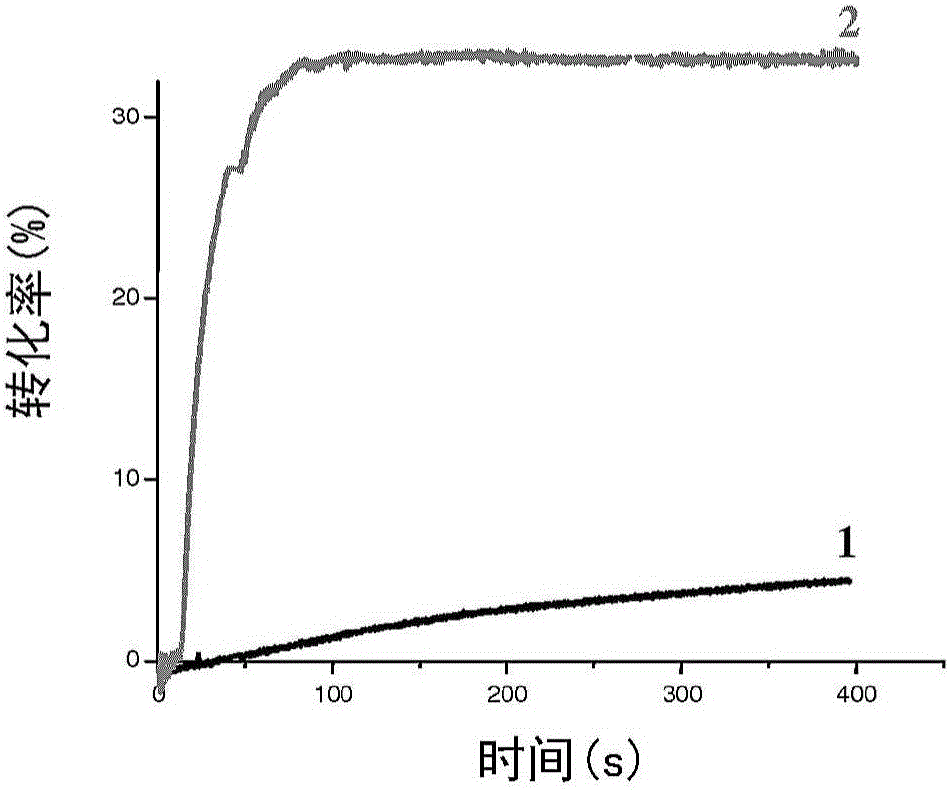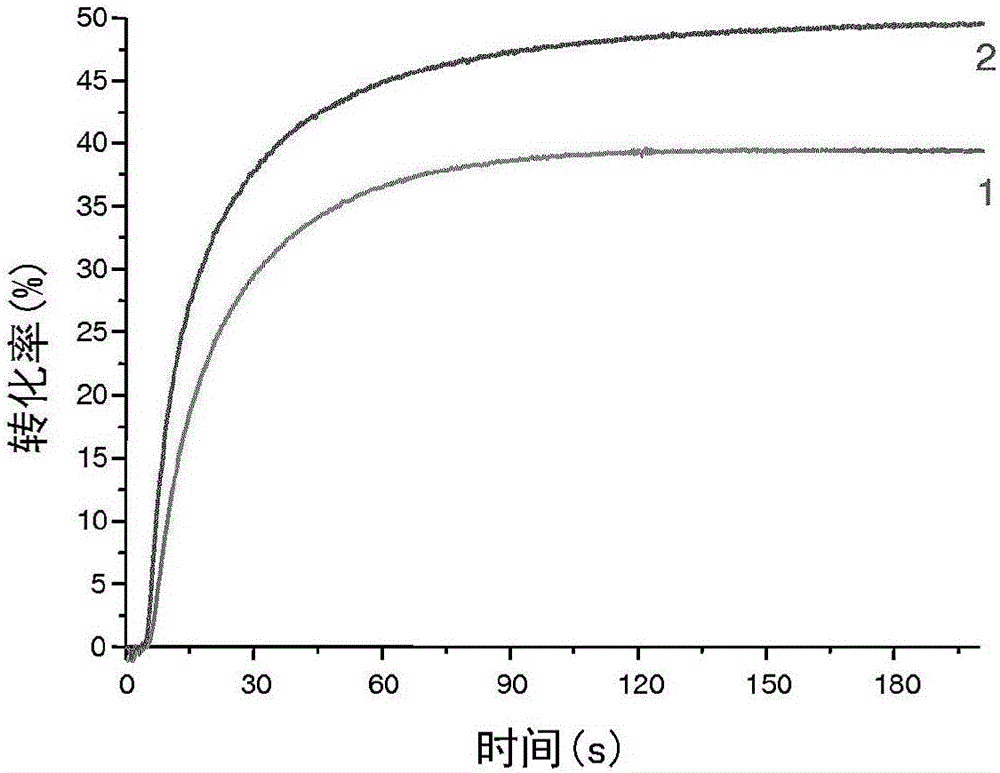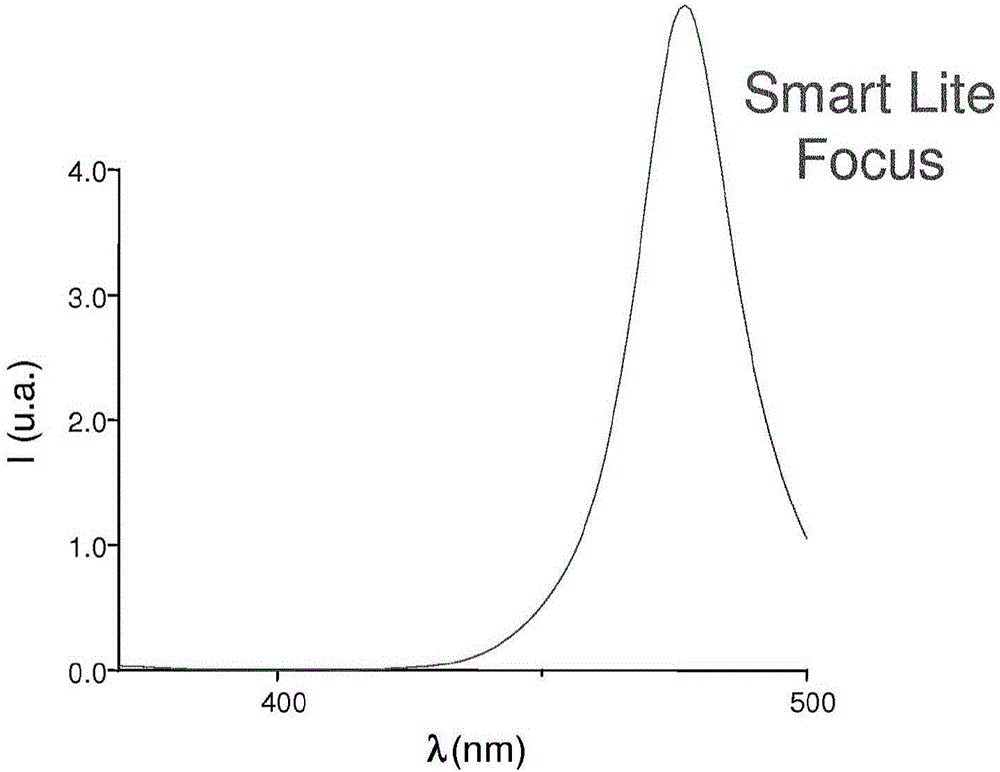Dental composition
A composition and dental technology, applied in the direction of dentistry, dental preparations, dental prostheses, etc., can solve the problems of undisclosed dental compositions, etc., and achieve the effects of improving polymerization efficiency, increasing curing speed, and high efficiency
- Summary
- Abstract
- Description
- Claims
- Application Information
AI Technical Summary
Problems solved by technology
Method used
Image
Examples
no. 2 approach
[0069] According to a second embodiment, X is Si and X' is Ge according to the following formula (IV):
[0070] R 1 R 2 R 3 Si(CO)GeR 4 R 5 R 6
[0071] (IV)
[0072] In formulas (I), (II), (III) and (IV), R 1 , R 2 , R 3 , R 4 , R 5 and R 6 The moieties may be the same or different and independently represent hydrocarbon groups having 1 to 20 carbon atoms, preferably 2 to 8 carbon atoms and more preferably 2 to 6 carbon atoms.
[0073] The hydrocarbon group may be an alkyl group, cycloalkyl group, cycloalkylalkyl group, aralkyl group or aryl group.
[0074] Alkyl group can be straight chain or branched C 1-20 Alkyl group, usually C 1-8 Alkyl group. C 1-6 Examples of alkyl groups may include linear or branched chain alkyl groups having 1 to 6 carbon atoms, preferably 1 to 4 carbon atoms, such as methyl, ethyl, n-propyl, isopropyl, n- Butyl, isobutyl, sec-butyl, tert-butyl, n-pentyl, isopentyl and n-hexyl.
[0075] The cycloalkyl group may be a C3-20 cycloalkyl...
specific example
[0085]
[0086] A preferred group of compounds are symmetrical compounds of formula (I), wherein X and X' represent Ge, R 1 = R 4 , R 2 = R 5 , and R 3 = R 6 , and R 1 , R 2 , R 3 , which may be the same or different, independently represent a C1-6 alkyl group or a phenyl group.
[0087] A further preferred group of compounds are symmetrical compounds of formula (I), wherein X and X' are Si, R 1 = R 4 , R 2 = R 5 , and R 3 = R 6 , and R 1 , R 2 , R 3 , which may be the same or different, independently represent a C1-6 alkyl group or a phenyl group.
[0088] Specific examples of the compound of formula (I) include bis(triphenylgermyl)methanone, bis(triethylgermyl)methanone and bis(trimethylgermyl)methanone.
[0089] Compounds of formula (I) may be known compounds which may be prepared according to published procedures. Alternatively, compounds of formula (I) can be prepared according to the following scheme (Johannesen R et al., J. Chem. Soc. Perkin Trans. ...
Embodiment 1
[0126]
[0127] Preparation of Di(germyl)ketone (DGK)
[0128] The procedure for the synthesis of DGK (Scheme 1 ) given in [Macromol. Rapid Commun. 2010, 31, 473-478] was used. To a solution of triphenylgermanium hydride (1 g, 3.28 mmol) in dry THF (3 mL) was added n-BuLi (2.5M in hexane, 1.31 mL, 3.28 mmol) at -23°C. After 15 min at -23 °C, ethyl formate (in CaH 2 freshly distilled, 0.58 mL, 1.64 mmol), the reaction mixture was allowed to warm at room temperature over 15 minutes, then quenched with aqueous hydrochloric acid (1M). The organic phase was separated and the aqueous phase was extracted three times with diethyl ether. The combined organic phases were dried over sodium sulfate, filtered and concentrated to obtain a white powder. crude reaction mixture 1 H NMR analysis showed a bis(triphenylgermyl)methanol / bis(triphenylgermyl)methyl formate ratio of 3:7. The latter was dissolved in dry THF (13 mL) and cooled to 0°C. Then add LiAlH all at once 4 (0.17 g, 4.37...
PUM
 Login to View More
Login to View More Abstract
Description
Claims
Application Information
 Login to View More
Login to View More - R&D
- Intellectual Property
- Life Sciences
- Materials
- Tech Scout
- Unparalleled Data Quality
- Higher Quality Content
- 60% Fewer Hallucinations
Browse by: Latest US Patents, China's latest patents, Technical Efficacy Thesaurus, Application Domain, Technology Topic, Popular Technical Reports.
© 2025 PatSnap. All rights reserved.Legal|Privacy policy|Modern Slavery Act Transparency Statement|Sitemap|About US| Contact US: help@patsnap.com



